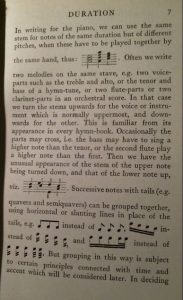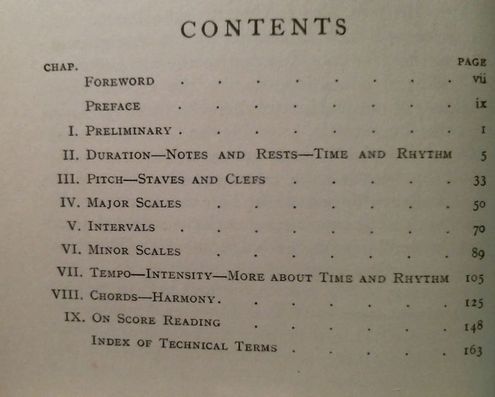Music Instruction – Piano and Other Instrumental Scope and Sequence
Although Mason scheduled a piano curriculum into the PNEU programmes, I believe this method could be used for all instruments.
The PNEU used The Child Pianist by Mrs. Curwen for piano instruction.
You can find The Teachers Guide to Mrs. Curwen’s Pianoforte Method ( the Child Pianist) here. Parents who have some piano experience and would also like to save money could easily use this program at home with their children. I suggest that you read this guide first thourougly so you understand the methods and then you can work through it with your children. The only free Student book I have been able to find online is her Step One Child Pianist book. You could print this and then try using the teachers guide with the student book. The other Steps could be purchased from England if you so desired. I have purchased several and hope to scan them and make them available in the Member Lessons as soon as I can!
Students were encouraged to continue their piano playing by studying pieces by the term’s composer that they were studying for Music Appreciation. So if the PNEU was studying Bach for that specific term, the children would also work specifically on piano pieces by Bach that were at their level of playing ability.
Forms 5 and 6 ( Ages 16-18, 11th and 12th Grade):
As you can see in the chart above, Forms 5-6 don’t have a piano curriculum suggested, as in forms 3-4, but continue to play pieces by the Composer for the term. They also are supposed to read several more intermediate and advanced level theory books.
The Growth of Music by H.C. Colles is a Study in Music History about instruments, forms, comparisons of composers styles, and genres of music. ( I think this book would have been used for students who maybe didn’t have as much piano background, but still needed to learn about the basics of musical form)
Elements of Music by Francis Davenport is a small booklet that teaches the basics about rhythm, pitch, intervals, scales, key signatures, musical notations and abbreviations, etc. ( It seems to me that this book is a more beginner level of music theory for maybe later beginners. Maybe students who didn’t begin piano study at a younger age in elementary school)
Foundations of Practical Harmony and Counterpoint by Reginald Owen Morris is unavailable online as far as I can tell, but we do have the table of contents so we can see the types of things the Upper High School Students would have been studying for their piano/instrumental studies. (This book is similar to what I learned in my college music theory courses, so I suspect it would have been used by students who were much more serious about pursuing musical studies. I can’t imagine that a student new to music would be able to understand this book well, BUT I could be wrong. I just received this in the mail this week, so new info on this book coming soon!)
Here is the Table of Contents for this book:

Introduction to Music by Piggot (Form 3-4)
COMMON CHORDS 3
FIRST INVERSIONS OF THE COMMON CHORD 14
HARMONIZATION OF MELODIES 21
Two OR MORE NOTES TO ONE 29
THE CHORD OF THE DOMINANT TTH IN ROOT POSITION 35
SUSPENSIONS 41
THE INVERSIONS OF THE DOMINANT SEVENTH 49
APPOGGIATURAS CHANGING NOTES AND ANTICIPATIONS 53
ELEMENTARY MODULATION 59
THE SECONDARY CHORDS OF THE SEVENTH 65
THE DOMINANT MAJOR AND MINOR NINTH 72
PART II 81
MELODY AND RHYTHM 83
THE HARMONIC ASPECT 89
COMBINATION OF Two PARTS IN THE FIFTH SPECIES 94
COUNTERPOINT IN THREE PARTS 101
CHAPTER PACE 107
SUSPENSIONS 117
THREE FREE PARTS 135
APPENDIX I 143
Copyright


